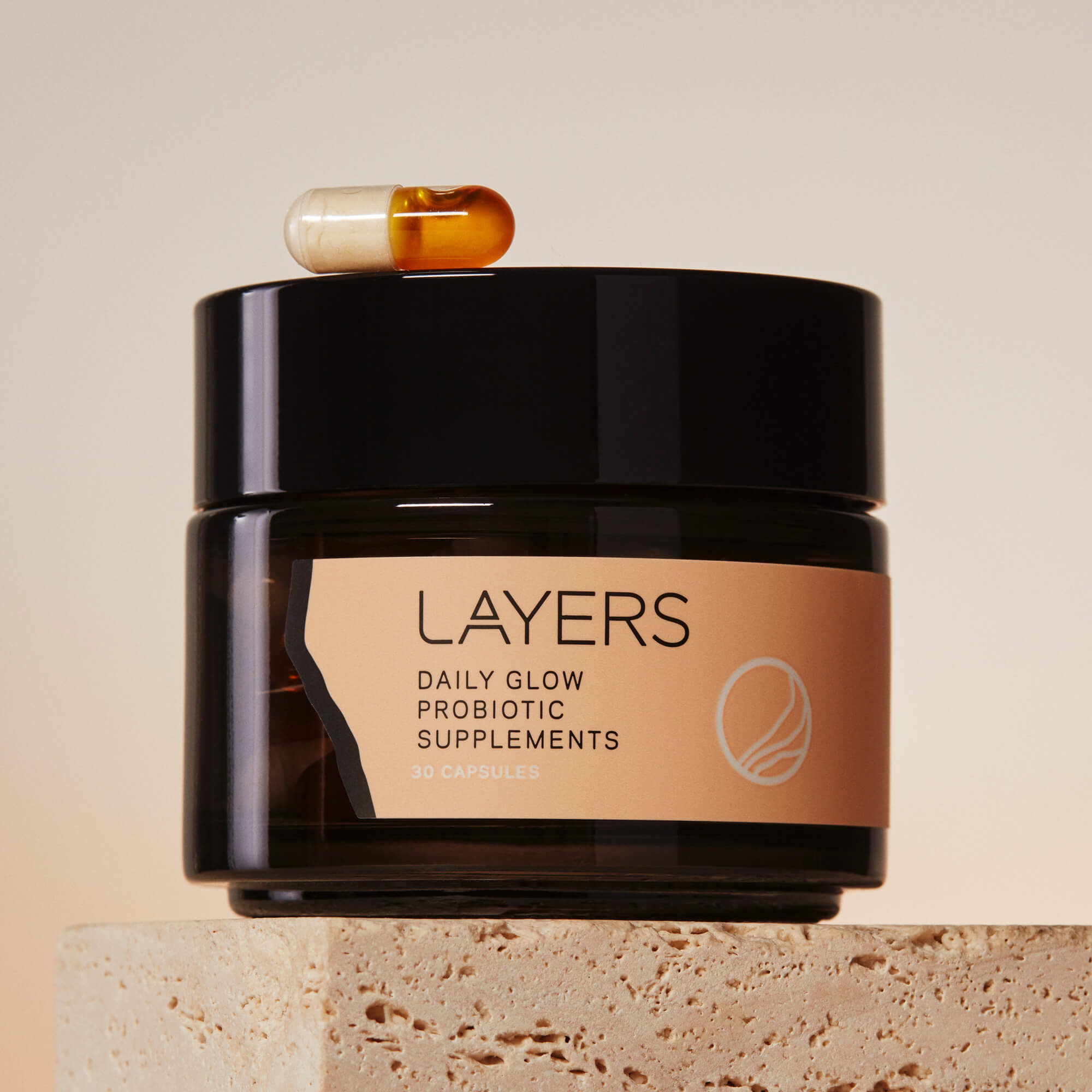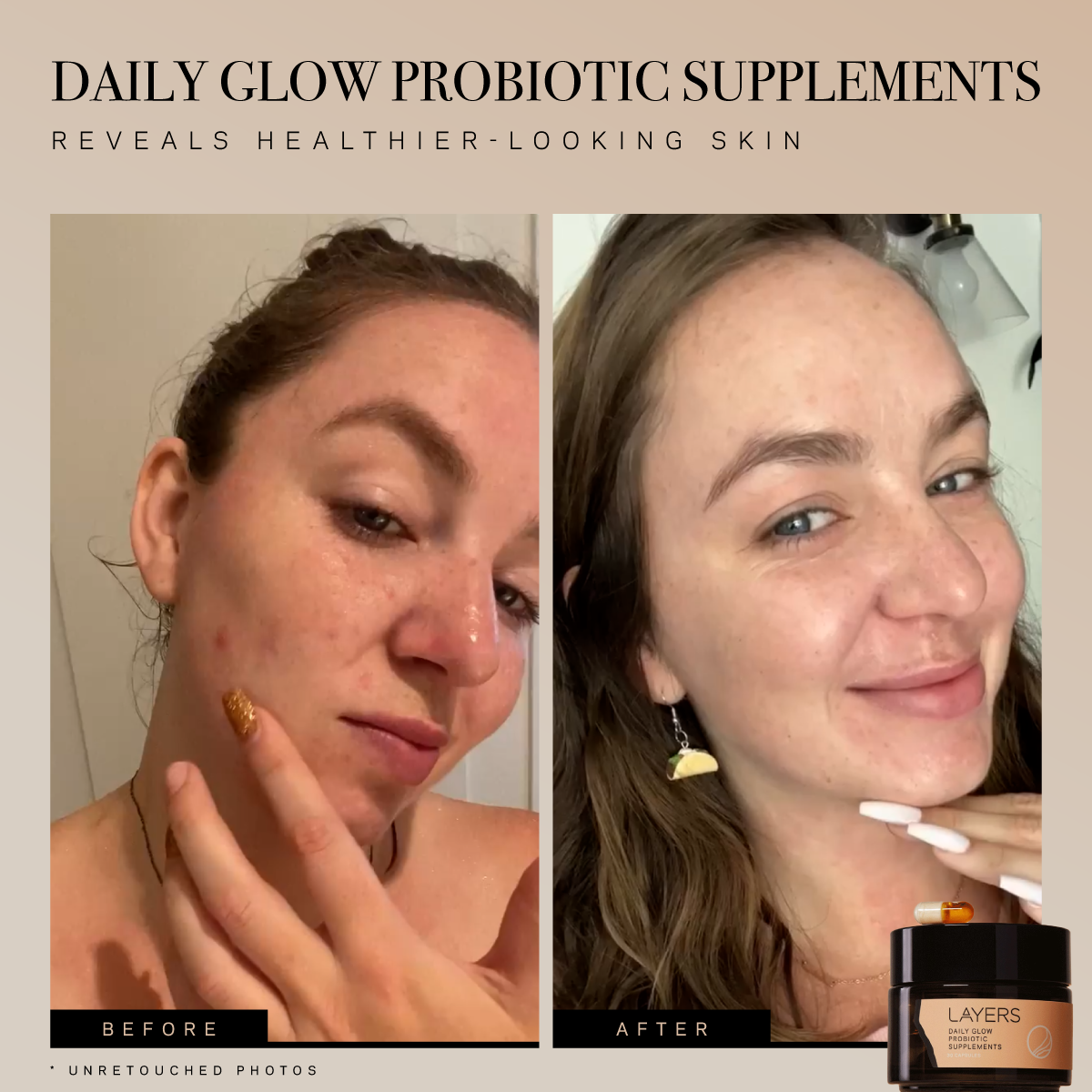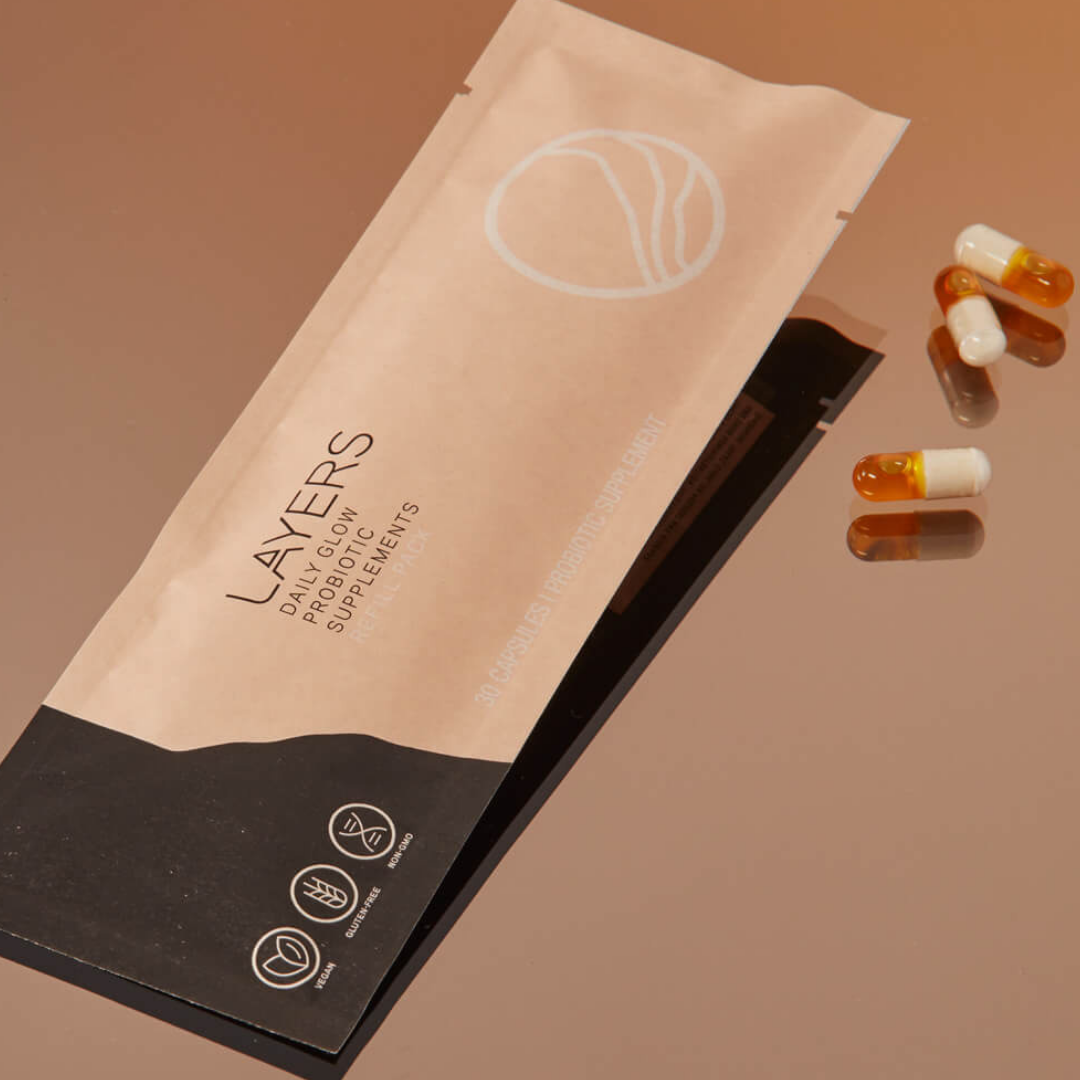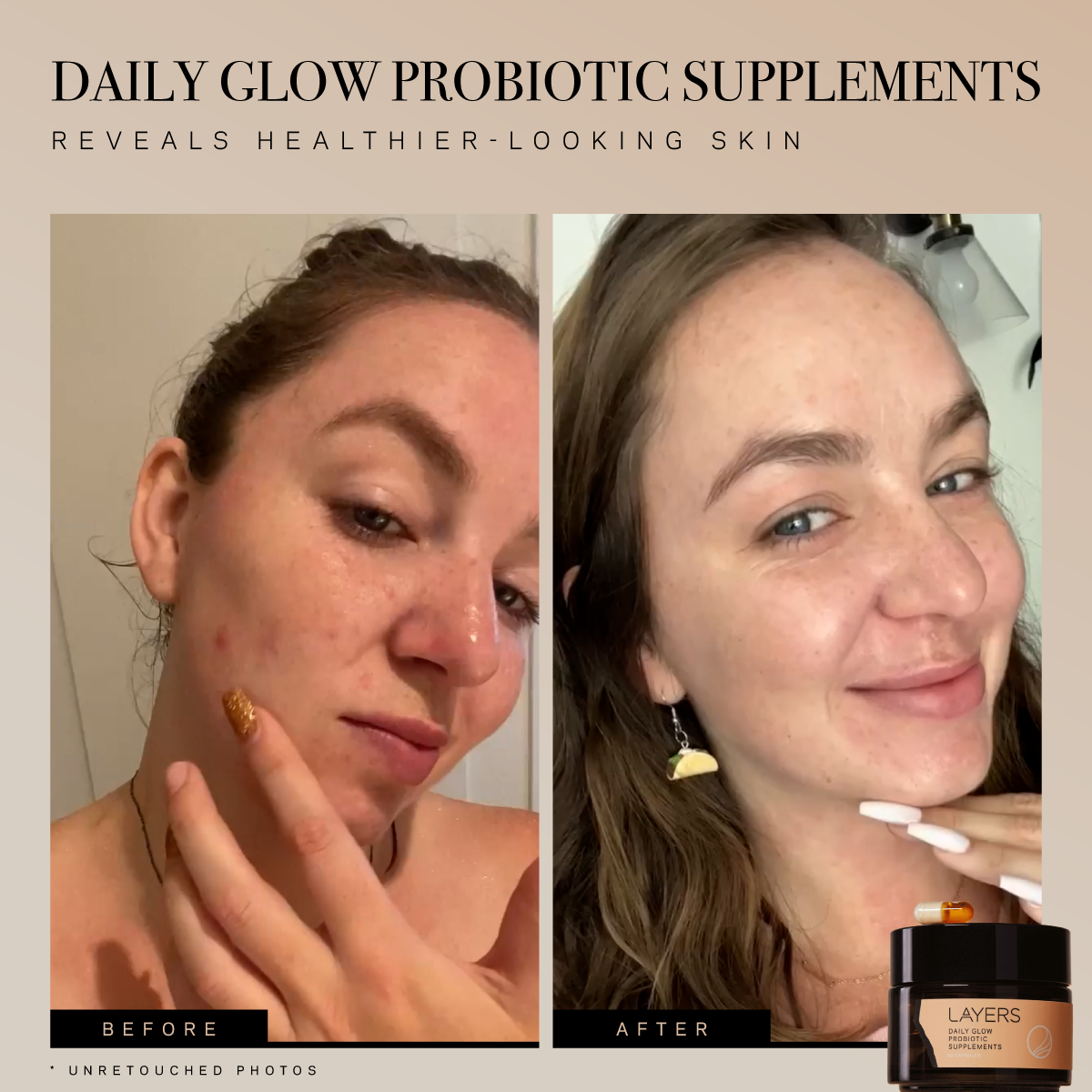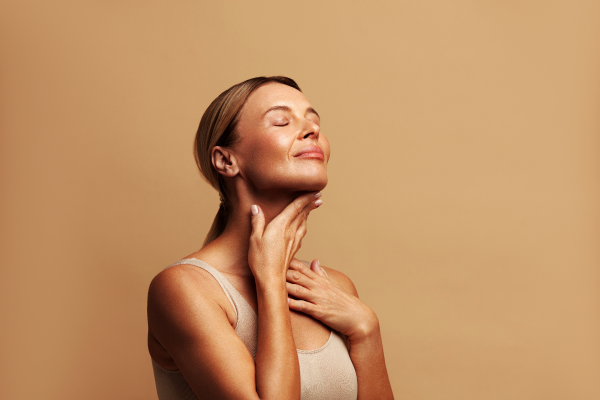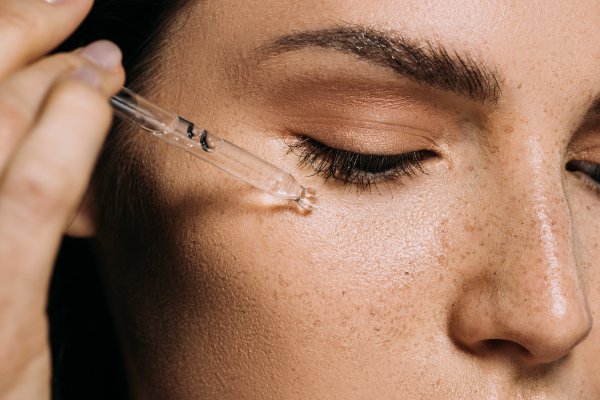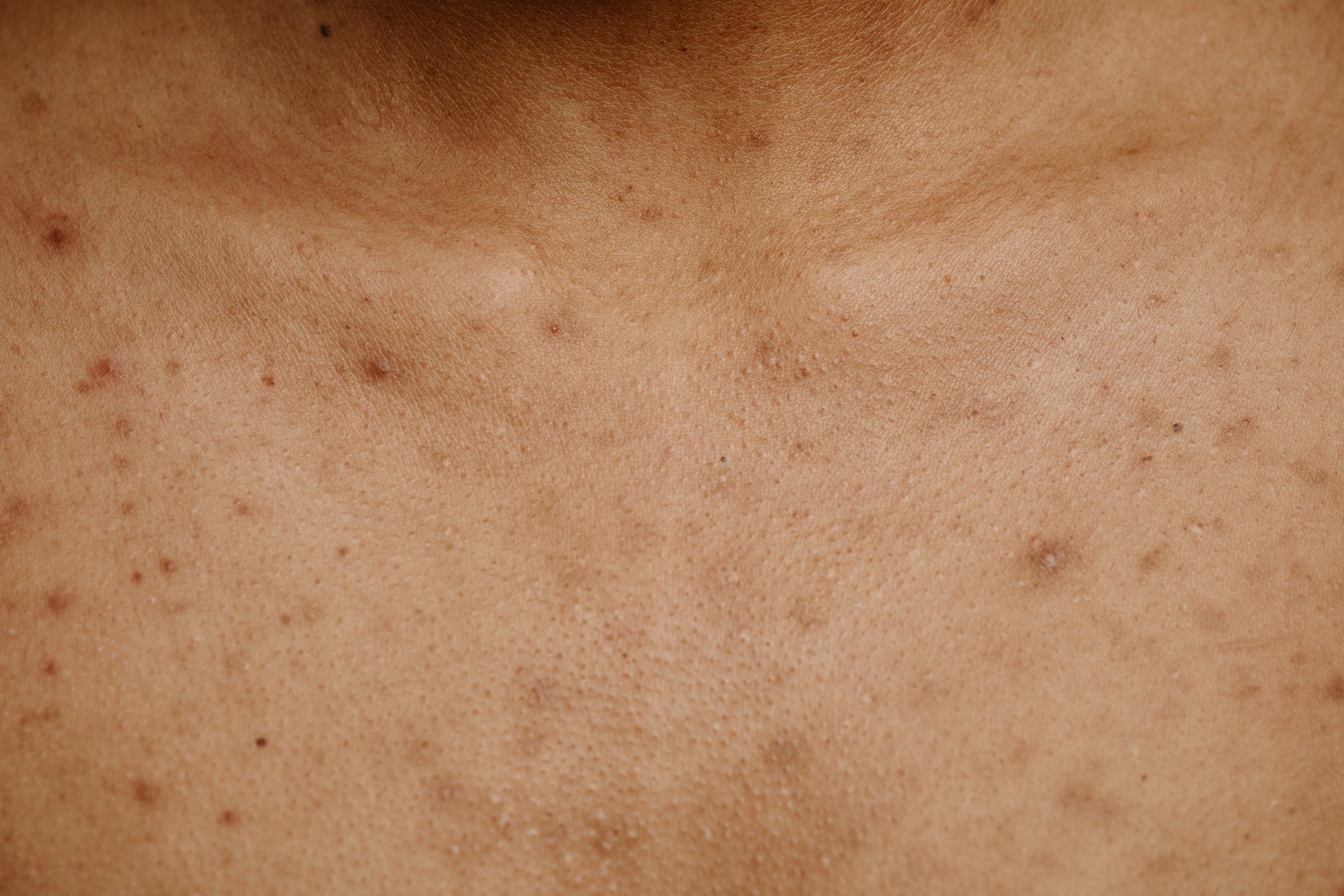Retinol could be doing more damage than good. Here’s what you need to know before you buy that bottle.
Aging is such a gradual process that it’s kind of hard to notice as it happens. But one day, you look in the mirror and see crow’s feet creeping out from the corners of your eyes. Or, maybe you notice perma-creases on your forehead that just don’t plump up like they used to. Pair those with a few stubborn smile lines that won’t disappear and, when you put it all together, it makes you want to run.
The natural process of aging isn’t easy for most of us, and photoshop has become notorious for glorifying youth and perfection in a way that’s far from accurate. But our fear of wrinkles and lines has created a wide opportunity market. As long as we continue our quest to avoid letting the years show, new product trends will continue to emerge just as quickly as they disappear, only to make space for the next anti-aging skin fad.
One of the biggest trends of the anti-aging era has been retinol. Since it emerged in the late 1990s as a rather aggressive, often uncomfortable, treatment for wrinkles and acne, people have been hooked on its potential for skin cell turnover and rejuvenation.
WHY RETINOL?
We start to lose the collagen in our skin from around our mid-20s. As we age, collagen loss continues to decrease, averaging between 1-1.7% yearly. The tell-tale signs of aging slowly become more noticeable on our daily visits to the mirror. Or, it hits us when we see older photographs of ourselves and we notice how much our youthful faces have changed. We want, no...we need to do something about it.
So, has retinol really come to rescue us from the signs of aging, or should we be a bit more wary of this suddenly ubiquitous skincare trend?
WHAT IS RETINOL?
Retinol is a derivative of vitamin A, which is one of the body's primary nutrients for boosting cell turnover.
There are 4 types of retinoids, each derived from a form of their predecessor:
-
Retinyl esters: most mild type of retinoid, less likely to cause irritation
-
Retinol: less potent than prescription forms, used widely in the beauty industry
-
Retinaldehyde: stronger form, often referred to as retinal
-
Retinoic acid: the strongest form, also called Isotretinoin or Accutane
WHAT DOES RETINOL DO FOR SKIN?
Retinol works by encouraging the division of basal cells on the skin's surface. As those cells divide, new epidermal cells move from the deeper layers to the top layer. The dead cells are exfoliated away, and this process repeats with extended use. It’s kind of turning up the dial on the cell renewal process. This, in turn, boosts collagen production, brightens skin tone, and reduces acne. Through faster cell regeneration and increased blood flow to the skin, problems like acne, scarring, free-radical damage, and dull skin are dealt with much quicker, albeit uncomfortably.
IS RETINOL SAFE FOR SKIN?
There’s no doubt that retinol is effective. However, it can easily wreak havoc on your microbiome if you’re not using it correctly. So the choice to use it and how you use it shouldn’t be taken lightly. There are a few things to keep in mind before you take the leap.
The first thing to understand about retinol use is that, despite the often-impressive results, it is a product that adds extra stress upon your skin's surface. Disrupting the skin’s natural process shakes up the bacterial balance and thus, the natural flow of your microbiome is interrupted.
Regular use can also become very irritating for your skin, especially if you’re using a product that’s too strong or if you’re applying it too frequently. Skin becomes more sensitive to environmental aggressors like pollution, UV rays, and contact with cigarette smoke when it’s irritated and inflamed.
Keeping your skin cells in a frequent state of turnover causes micro-inflammation. Further disruption with harsh exfoliators and other chemical compounds may actually cause damage to the structure and strength of your skin over the long term.
So with all of this in mind, how can we use this potent but effective product safely to best benefit from it?
HOW TO USE RETINOL SAFELY
Most over-the-counter options recommend applying no more than a pea-sized dot. Opt for low and slow over high and fast. A low percentage over-the-counter formula between .01% and 0.03% is best, and no more than 2-3 times per week. Give your skin time to acclimate slowly. Watch for signs of irritation and cut back on strength and frequency. Or, take a break altogether and allow your skin to heal.
TIPS FOR USING RETINOL
-
Only use it at night, as sunlight deactivates retinol
-
It’s recommended to use retinol every 4 days
-
Always wear an SPF during the day
-
Don’t use in the days before you plan to exfoliate
-
Avoid using astringents, toners, alpha hydroxy acids, beta hydroxy acids, benzoyl peroxide, and vitamin C-containing products, as doing so may irritate the skin.
-
Avoid using if you have rosacea or eczema
SHOULD I USE RETINOL?
To minimize fine lines, wrinkles, and signs of aging, it’s an effective way to go. If you have acne and want to calm it down and smooth skin that’s suffered from the effects of breakouts, then retinol is also a good choice for you. However, if you have rosacea or eczema, it might just be too harsh.
If you start using retinol, expect some disruption to your normal complexion. If high levels of irritation persist for longer than 4 weeks, you may need to rethink your retinol routine. You can take a break to let your skin calm down, then reintroduce it to a lower concentration of retinol.
Whether you can tolerate retinol or if it’s too harsh on your skin, a healthy microbiome is the best path to creating an environment where good skin can thrive. Retinol will definitely help speed-up skin cell turnover, but the cost to your skin microbiome, if you have already irritated skin, might be more than you’re willing to pay.
When it comes to approaching skin health from the inside out, the focus should be on healing, rather than irritating. If retinol helps your skin heal, then it can safely become a part of your routine. If you find that it feels more like adding fuel to already inflamed skin, focus on other ways to support and protect your microbiome. In other words: Don’t bother it. Balance it.
The first step towards healthy skin is repairing the barrier and calming inflammation. Your skin is a protective organ, so doing what you can to not overwork it or exhaust it is key. If retinol is too disruptive, there are ways to help your microbiome thrive and work better for you in the long run.
SUPPLEMENTS AND ALTERNATIVES TO RETINOL
The best way to supplement or take an alternative route to good skin is a microbiome balancing act that brings order to what’s out of sync. From acne to premature aging, the roots of these issues can be traced directly to gut, hormone, and microbiome imbalances. When harsh external products are applied, they change your skin’s pH, which can lead to breakouts and the premature breakdown of collagen. Keeping your good bacteria in a state of balance is the key to long-term microbiome health and glowing skin.
Using these clinically proven, naturally sourced ingredients will keep your skin youthful and hydrated.
Replenish and repair with these natural powerhouses:
-
Meadowfoam Oil: A proven anti-inflammatory that inhibits collagen-degrading enzymes. It also helps offset the negative impact of UVB light exposure, which is one of the biggest culprits when it comes to photo-aging. With a similar texture to sebum and rich in vitamin E, this efficacious and lightweight oil locks in moisture, balances the skin, and enhances other skincare ingredients for softer, plumper skin. It’s also non-comedogenic, making it safe and soothing for acne-prone skin.
-
Pomegranate extract: This antioxidant-packed ingredient is a force; combining phytonutrients, vitamins (namely vitamin C), minerals, ascorbic acid, and fatty acids to neutralize free radicals, plump the skin, and support collagen production.
-
Milk Thistle: Used for its powerful anti-inflammatory and antioxidant properties, this calming ingredient helps replenish damaged skin while relieving skin discomfort and evening-out skin tone.
-
Lactobacillus Ferment: This protective probiotic ingredient fortifies your skin barrier against external stressors while soothing and hydrating. It's known to help repair damaged skin, rebalance skin flora, and reduce harmful bacteria growth.
-
Lactic Acid: As the gentlest of the Alpha Hydroxy Acids (AHAs), lactic acid helps improve skin’s natural moisture. As a natural exfoliator, continued use helps firm skin, fade spots, and smooth fine lines and wrinkles.
-
Orobanche Rapum Extract: Grown in southern France, and well known for its antioxidant activities and biological properties, this effective extract actively protects skin stem cells and balances the microbiome.
MUST TRY: Renewing Probiotic Serum
This concentrated serum, with a blend of lactobacillus ferment and skin-renewing plant extracts, speeds skin surface turnover and increases lipid and protein levels for stronger, more luminous skin - without irritation.
Contains:
-
Lactobacillus Ferment
-
Orobanche Rapum Extract
-
Meadowfoam Oil
-
Lactic Acid
MUST TRY: Layers Immunity Moisturizer
This daily nourishing moisturizer contains meadowfoam oil and other ingredients that help fight the signs of aging while helping you maintain a healthy, thriving microbiome.
Contains:
-
Lactobacillus Ferment
-
Meadowfoam Oil
-
Pomegranate extract
-
Milk Thistle
A RETINOL RECKONING: SHOULD I OR SHOULDN'T I?
The bottom line when it comes to retinol? If you’re using it and it’s not causing long-term irritation, make sure you’re re-balancing your skin’s pH by supplementing with a probiotic skincare routine. Do you need retinol? It’s effective if your skin can handle it, especially if you’re keeping your skin in a state of balance. Probiotic skincare happily helps you avoid many of the pitfalls of harsh skincare products because you’re not putting your skin under as much duress.
If your skin is a bit more sensitive or you suffer from any type of inflammatory skin condition, a microbiome balancing might be just the answer you’re looking for. In these cases, retinol may be too strong.
There’s a good reason why probiotics are all the rage these days. Use them to your advantage by supplementing or replacing any routine that can potentially cause disruption with some healthy bacteria. Whether on its own or in unison with products like retinol, probiotic skincare is an ally on the balanced path to healthier, brighter, and more youthful-looking skin.

